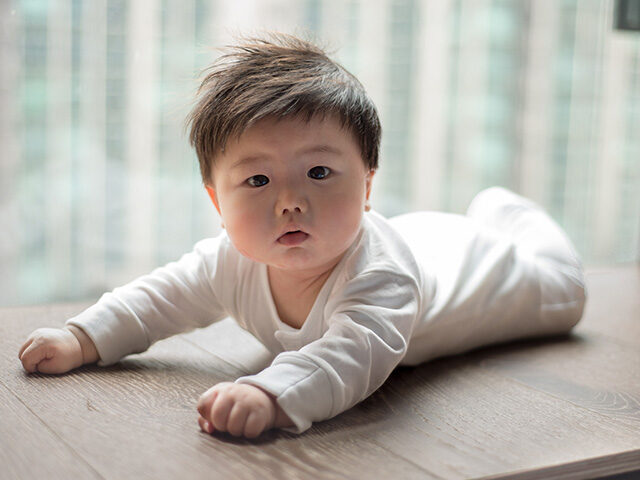Japan, Singapore, and South Korea all posted record-low birth rates for 2023, providing the latest evidence that much of Asia is grappling with a severe demographic crisis that will lead to higher costs for social services and reduced manpower for industry in the near future.
South Korea already had the unwelcome distinction of the world’s worst fertility crisis and, on Wednesday, the Population Census Division at Statistics Korea revealed the lowest birth rate on the planet for 2023, a mere 0.72 children per fertile woman. Anything less than 1.3 children per woman is considered “very low fertility,” while a stable population requires at least 2.1.
To use another common metric, the number of South Korean newborns per 2,000 population fell to 4.5, down from an already alarming 4.9 the previous year.
“The number of newborns in 2023 was 230,000, which was 19,200 fewer than the year before, representing a 7.7 percent decrease,” reported Population Census Division chief Lim Young-il.
The latest drop in birth rates came despite enormous spending by the South Korean government to reduce the financial burdens of motherhood and a vigorous public relations campaign to encourage young couples to marry and have children. Turning birth rates around is one of the top stated priorities of President Yoon Suk-yeol’s government.
South Korean politicians and academics have warned the country faces “national extinction” if population decline is not reversed, a warning first issued by Professor David Coleman of the University of Oxford, who predicted in 2006 that South Korea could become the first “population extinction nation.”
The news was not much better in Japan, where the number of babies born last year fell to a record low, and the national population shrank by the largest amount ever recorded.
According to the Japanese health ministry, births fell by 5.1 percent to 758,631, and the overall population declined by 831,872, including foreign residents. The number of new marriages fell to post-World War II lows, while the number of divorces increased substantially.
The figures came as a surprise to the Japanese government, which previously estimated that births would not dip below 760,000 until 2035.
“The period over the next six years or so until 2030s, when the younger population will start declining rapidly, will be the last chance we may be able to reverse the trend. There is no time to waste,” Chief Cabinet Secretary Hayashi Yoshimasa warned on Tuesday.
Japanese researchers focused on the decline of marriages as a key factor in the population slide, given that like many Asian societies, Japan has a strong cultural aversion to out-of-wedlock births. China has begun experimenting with efforts to lift the social stigma against single-parent families and provide them with more generous subsidies, but Japan seems reluctant to take that step.
In Singapore, the fertility rate dropped below 1.0 for the first time in its history last year, after dropping to 1.12 in 2021 and 1.04 in 2022.
Singaporean officials blamed some of the decline on marriages and pregnancies being delayed by the Wuhan coronavirus pandemic, although those trends should have long since begun reversing.
Minister in the Prime Minister’s Office (PMO) Indranee Rajah insisted to Parliament on Wednesday that Singapore’s young people are still interested in getting married and starting families, although the data shows their interest in both has waned over the past five years.
“With fewer births, we will face a shrinking workforce. It will be increasingly challenging to maintain our dynamism, attract global businesses and create opportunities for the next generation,” she warned.
“Even with immigrants, we do not have enough working locals to support continued good economic growth. We must therefore remain open to a diverse foreign workforce that complements the local workforce,” she said.
Indranee said people have become more hesitant to start families because they worry about “the financial costs of child-raising, pressures to be an excellent parent, or difficulties managing work and family commitments.”
Singapore recently introduced a plan to offer four weeks of paid paternity leave to fathers, increased from the previous allowance of two weeks. Granting this extra leave is voluntary for employers, but the government compensates them if they do.
Indranee said her office is encouraging employers to provide more family-friendly work schedules and maternity benefits. She frankly encouraged the public to have more babies because “Singapore needs more Singaporeans.”
“Ultimately, it will require a whole-of-society effort to build the family-friendly workplace culture that members have called for. All of us have a role to play, whether as parents, employers or co-workers,” she said.
Singapore has been a little more willing to support its population level through immigration than other Asian governments. Indranee said 23,500 new citizenships were granted last year, plus 34,500 permanent residencies. The total population of Singapore is a little under 6 million.
“We continue to maintain a measured and stable pace of immigration, which moderates the impact of demographic trends on the size and age profile of the citizen population,” Indranee said.

COMMENTS
Please let us know if you're having issues with commenting.